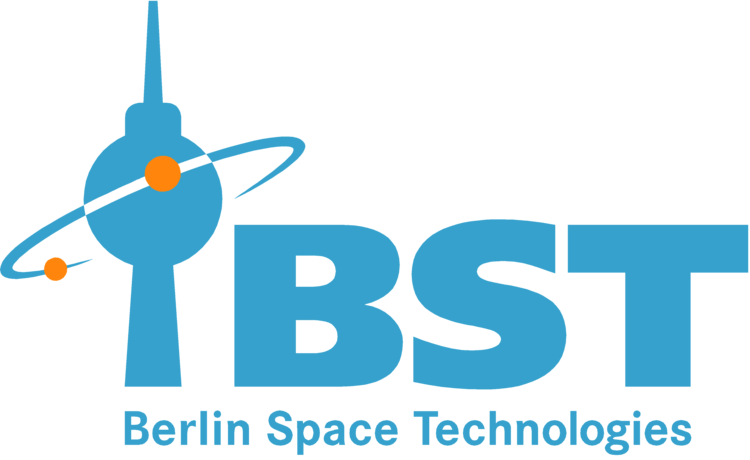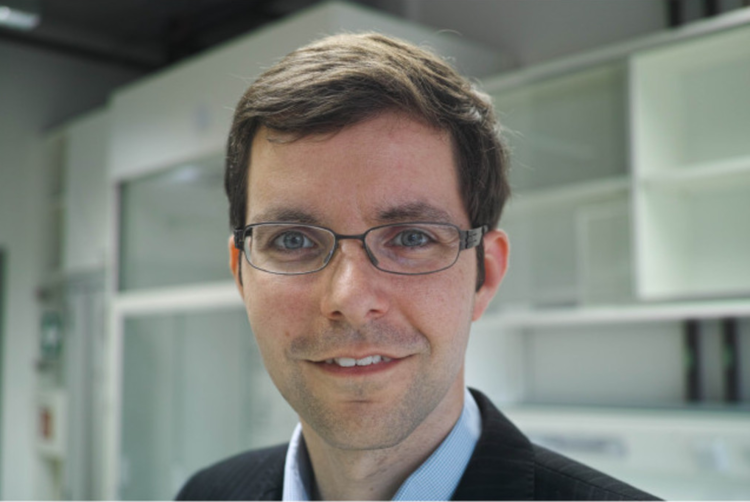During the last decade, Tom Segert has shaped the small satellites industry in Germany’s capital, Berlin. He has been keen to find new and innovative ways of linking technology (upstream) and its applications (downstream).
Tom first worked as a project manager at TU Berlin then later became an Innovations Manager at the Space Industry Association Berlin-Brandenburg (RiBB) and an entrepreneur in founding Berlin Space Technologies GmbH.
Spaceoneers caught up with Tom Segert, Director of Berlin Space Technologies at the INNOspace Masters Conference in Berlin to hear about how his company got started, and how him and his partners built it up from very few resources.

Spaceoneers: What is your value proposition?
Tom Segert: We are enabling people to build their applications based on our space systems. And we do it in a way that we don’t understand ourselves as a provider of a satellite system but as a partner that provides a solution. That means that rather than to say this is your satellite and my hands are free, we say ‘what do you need? Do you need a technology? Do you need a service? What do actually you need?’ We are enabling other people to make their businesses. If you imagine the downstream market as a big curve, we want to essentially take the room below that to enable others to actually grow there.
Spaceoneers: Classically you’re not a cubesat manufacturer but you build bigger satellites?
Tom Segert: What we are doing is we are offering about 80-90% of capability of today’s state-of-the-art microsatellites in the 100-150kg-class at a price that is round about 10 to maybe 20% the price of traditional systems. We can basically offer a system that is very similar in cost to a traditional cubesat or nanosatellite with the capabilities of a grown-up microsatellite.
Spaceoneers: So, you build upstream but you’re more interested in downstream?
Tom Segert: Exactly! We are building the systems in the upstream but we have several joint ventures with partners who actually work in the downstream services where we provide the system. Rather than say ‘I sell you a satellite system’, we say, ‘ok I give you the satellite system for free or at a very efficient price point in exchange for some equity.’ That’s what we call a venture technologist rather than venture capitalist.
Spaceoneers: That’s a very disruptive way of service provision.
Tom Segert: Well, I don’t know if it’s very disruptive but we certainly hope that. We believe the market for upstream will remain relatively small. Even if we build a hundred satellites it doesn’t scale in the thousands. So, investing our technology and enabling people to grow the market seems a much smarter way. For the other people who build such systems we reduce the setup costs and we can then participate in their success. We therefore try to create a win-win where the value of the technology is really in the application. We therefore play a part in what they are actually building. So, if this thing skyrockets, then we have a part in that. If our technology is not contributing to your success then your value is lower, our value is lower.
Spaceoneers: So, there is a big risk in that?
Tom Segert: Yes, of course. No risk, no fun.
Spaceoneers: That sounds like the right way to be an entrepreneur.
Spaceoneers: How did the idea for your business come about?
Tom Segert: I usually joke that when I finished my studies or when I was in my studies I realised nobody wanted to hire me as I was only a mediocre engineer. I was always a very good storyteller. Probably a lot of that is thanks to my parents philosophers, so I was always interested in the grand scheme of things. I tried to have a vision of what to do.
I realised there’s technology and a lot of applications. So the first step in building my business was how to build the technology. But I realised technology is always limited if there are no applications. We figured there was no market other than the space agencies. So we decided early on not to go to the space agencies and try to do something really commercial. That is how the company came to being and that is why we are who we are. We are always keen to focus on the value for the customer. How can we build something they actually need? How can we be focused that their business model is viable that they come back buying more satellites or building more things that we can contribute to?
Spaceoneers: What were the steps you took from university to creating a successful business?
Tom Segert: Lots and lots of failures! We tried one thing and it failed. I really call the period of about five years a ‘crash and burn’ where we basically tried to come from an idea to something that actually worked. That was the biggest challenge.
The thing is, at that time when we tried to do that there wasn’t such a big hype about space. Everyone was saying ‘commercial space doesn’t work. There are no investors.’ We were talking to the venture capitalists and they said there was no space market and it takes so long to launch anything. So how could you do anything? There was therefore a big series of repetitions, trying new things and what customer wants; not just what says they say they want but what they actually want to buy. That’s what we have done. We have invested for 10 years, every single Euro back into our business, always working somewhere else part-time. That’s how we were able to work from our cash flow. For a long time the founders were the worst paid employees of the company. You therefore have to stay hungry. If you take too much of other people’s money – e.g. suddenly €10million in your bank account – you have a tendency to get lazy, to say, hire a hundred people not always knowing what to do with them. When you have no money you are forced to be creative and do things differently.
Spaceoneers: How many people were you when you started?
Tom Segert: In the very beginning we are about 3 people, in 2003. And that was honestly was more about my personal vanity. I wanted to call myself Project Manager. Hence I was reasoning we had to have at least 3 people before I could call myself a project manager. I founded the project at the university with one of my dear colleagues and co-founders, Björn Danziger. We were always between 3 and 4 people. In 2012 it really took off. Between 2012 and 2013 we grew from 3 to 5 people then by the end of 2014, we grew to 24 people, which is our current size. We found numbers went up really past when we went past a certain threshold. It takes a lot of time to get there, especially if you don’t have investors, which we didn’t have. If you don’t have banks you have to build products, reinvest, then build products and reinvest. So at a certain time people see you after 10 years and think maybe this guy hasn’t done so many things wrong in this time.

Spaceoneers: Who and what are your influences and why?
Tom Segert: Well, I always wanted to do things. When I was asked at school what I wanted to do as a job, I always wanted to plan things and build things. When I went to the ‘Arbeitsamt’ (employment office) in 8th/9th grade to determine what job to do (e.g. work at banks, build mechanical things), I always said I want to implement visions. I want to plan things and change the world in the small things and the big things. I was told there is no such job. I realised I had to invent a job for myself. I realised I didn’t want to do that in an existing structure but that I wanted to build that structure myself to shape my own thing. That is how I became an entrepreneur.
Spaceoneers: What were the biggest challenges when you started your business?
Tom Segert: Biggest challenges for an entrepreneur are always money; not to have enough money but that makes you creative. If you have a million Euros, you may be less creative than if you haven’t the money for a year or two. It’s more of a struggle, so you have to be creative.
One quality you certainly need is resilience. Everybody will tell you that you are wrong, that what you are doing doesn’t make sense and you might not have earned a single Euro with that. In my case my family was very supportive but it might be that family and friends are not supportive and you spend a lot of time developing your ideas, which could make private relationships very difficult. That is very challenging beside the money.
You have to keep your motivation and never give up, regardless of how hard you have been slapped in the face. To be honest, I always describe it as a field of fog. You go in and always believe that in one step you will make it great. Everybody outside of the fog is like ‘no, no, you have only moved three metres into the fog’. And you’re ‘no, I have made it through that foggy area’. That’s the most challenging part but therein lays the reward. Forget about money and the status. The ability after you have crossed that field of fog, to have the last word and tell all the people that have doubted you, ‘see, I was nearly through the fog’. At least for me, that is one of the biggest rewards beyond struggle. After you have been challenged with so much doubt after so many years, now standing on the right side of history. New space is THE thing that is really going on and people want to be like us now.
Spaceoneers: How do you keep motivated to get through the field of fog?
Tom Segert: You have to have that in yourself. I’d say I am an extremely ambitious person and extremely optimistic. In the largest disaster I always want to see the positive things to succeed. After hitting the wall so many times, I thought this is the worst thing that could happen. You have to stay positive to succeed and have that mentality. If you don’t have that in yourself already it’s very, very hard. If you don’t believe in yourself, nobody else will. That is something that has to be in your personality. That is the biggest asset, I’d say, to have as an entrepreneur.
Spaceoneers: How did you get the team together? You started as three people.
Tom Segert: First of all we have a genius in our company, Matthias Buhl one of the founders of Berlin Space Technologies. He’s crazy-good at all things technical. He did a lot of things before at the Technische Universität Berlin (TUB and had gained a lot of technical knowledge. We then we hired a lot of non-space people because we reasoned that actually a lot of space people are actually more generalists. They know a lot of things about space but they may not necessarily be so good to build a specific thing. We thought that if we hired a non-space specialist such as a mechanical engineer or an electrical engineer it is much easier to teach them the difficulties of space and do the supervision with our founding team, rather than build the technical into broadly educated space engineers. So we hired a bunch of people, attracting a lot of very good talent. If you tell an engineer they can build a satellite in two years that attracts a lot of cool people.
Spaceoneers: Where do you find that resource in pulling such talent?
Tom Segert: We just announce it on our LinkedIn and on our webpage and we’ve been overwhelmed. We were specifically looking for people not jumping from company to company. We actually like to hire people who have kids, because they stay in Berlin, who are settled. I have no problem to hire old people. We like to hire people who have done projects already; I don’t care what type of project but I think that to know how to work on them is very important. It shows they are capable in working in such an environment. In a small company you always have to have people work towards multiple things independently. So have they done multiple projects and are they willing to look beyond their own horizons?
Spaceoneers: How did you get customers interested in your product?
Tom Segert: It’s about the story of how we did things. At the beginning we didn’t have anything. We were in a very nice building in an incubator. What we did is we got the key from the landlord and then I walked with the customer through empty labs. I said ‘here we are going to build your satellites. Here we have the clean room etc. Trust in us!’ We were lucky our customers believed in us. Probably our ideas and innovation were good to convince them. And I think the results that we have a satellite in space, that we are one of three German companies that build a complete satellite system, that we have done that without the help of DLR and ESA that shows we have been right.
Spaceoneers: Which technologies and trends will affect your industry in the next few years?
Tom Segert: What we have to do is speed up the production process. How can you build a satellite in a week? We have shown we can build a satellite in a very short period of time. Production technology exists in other fields. The problem is we’re not going to build 1 million satellites but 100. How can we have the efficiency of a car manufacturer, requiring a small number of people? Labour is still the highest cost. How can we speed up the process and build satellites with a small team? That I think is the biggest innovation to bring down the costs.
Spaceoneers: Do you use off-the-shelf products?
Tom Segert: We build about 85% of our products in-house based on industrial components and try to integrate as much as possible. Very similar to the SSTL X50 programme, I think one of the smartest moves in the industry; we can build a modular system, which can be built in house. Within a couple of weeks you can build subsystems and integrate them to satellites. If you need 10 people for one year, it costs you €1million in salaries. If you can build in that same time 100 satellites, you have already reduced the main portion of the cost by a factor of 100. That is the biggest saving.
Spaceoneers: How will those trends affect your value proposition in the near future?
Tom Segert: What we try to build is one of these satellite factories. Together with partners and investors. If someone came to my door, I would say rather than invest in BST, invest with us in one of these satellite factories because this is a key problem that needs to be solved. The first one who can do that will dry out the market for everyone else. We’re still talking satellite costs of several million Euros per piece. The first person to drop the cost to half a million for a highly functioning satellite, who can produce them in fast numbers and at high quality will rule the market. We are aiming, with our partners, to be one of those.
Spaceoneers: What advice would you give to those starting their own space startup?
Tom Segert: Focus on downstream. The big money is in downstream markets. We are satellite builders, so we want to build satellites but we have already moved our value proposition away from the upstream in collaboration towards the downstream. Where our biggest need on the ground and how can you solve that? Then try to find a solution. It doesn’t have to be a space solution. Look at Jeff Bezos from Amazon, making his billions selling books and CDs on Amazon and then you can still have a space project on the side. Focus on where the money is, in the downstream services.
Spaceoneers: What makes you a spaceoneer?
Tom Segert: I think for the last 10 years, before anyone else had though about new space things, we had thought these ideas. We didn’t have money like in the US but certainly we had very good ideas. Now we are in a very good position to solve some of the problems US still has. Some of our upcoming business models may well disrupt their business models.
Spaceoneers: Can Europe have a better new space sector than the US?
Tom Segert: Yes, for sure. I can’t go into details at the moment but yes. For sure it is possible. Every week I publish on LinkedIn where I put some of my ideas online. In the coming weeks I will put some ideas there, not everything, but some ideas better than US that are held back by the vast amount of money they have. With less money you can do can do more!

